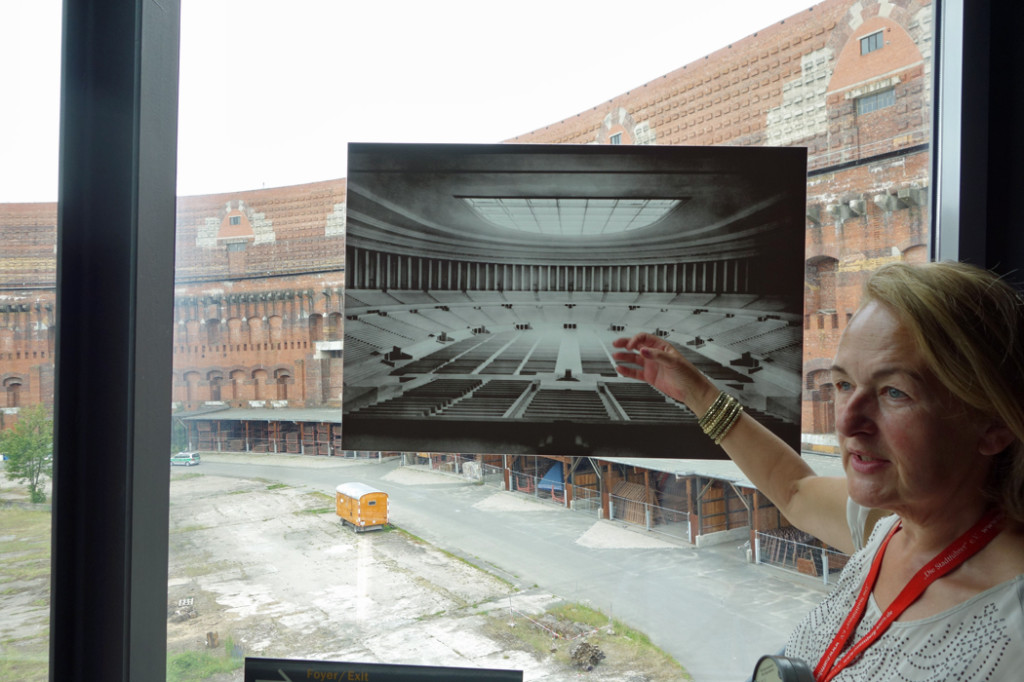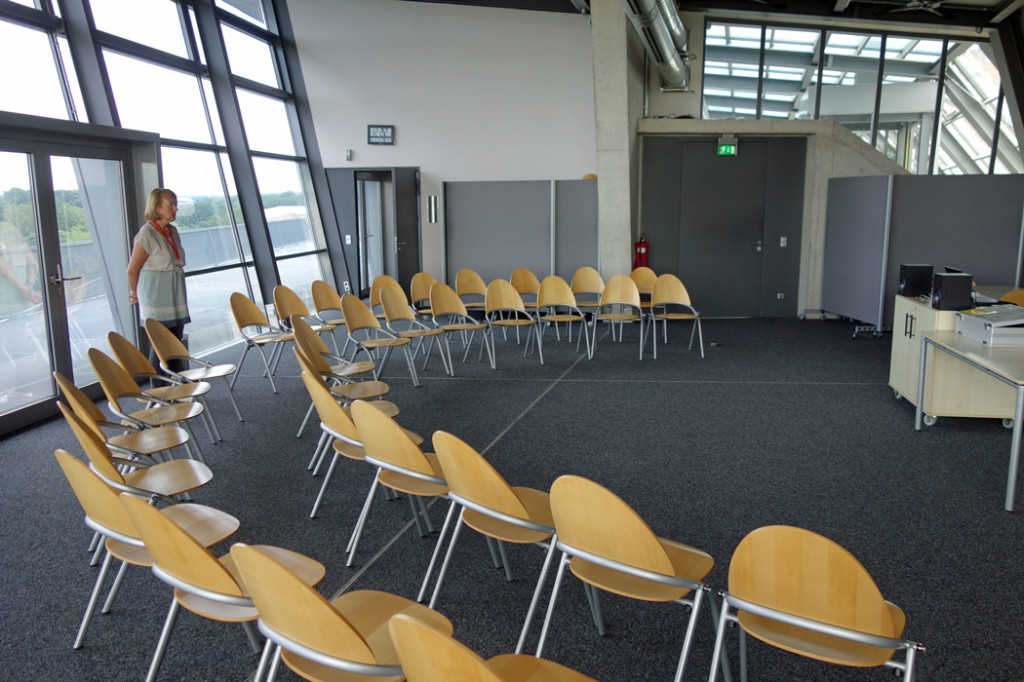I’m in Nürnberg, which has some of the most thought-provoking sites anywhere relating to Germany’s Nazi past. Those curious about this dark period can visit Hitler’s vast Nazi Party Rally Grounds, and learn more at the excellent Nazi Documentation Center.
The goal of a “Documentation Center” is to catalog, analyze, and attempt to explain the crimes of the Nazis — to ensure that this important history is never forgotten. With the passing of the generation that lived through WWII and the Holocaust, oral history is now transferred into these historic sites.
I remember when the Germans I met seemed to know very little about the Holocaust and Hitler. In the 1960s and 1970s, German history teachers mysteriously ran out of time when they got to World War I. But these days, it’s clear to me that Germans feel a responsibility to inform themselves about past generations’ crimes. It’s built into their school curriculum: Literature classes include The Diary of Anne Frank. All German 8th graders learn about the basic concepts of nationalism, patriotism, socialism, and fascism as they study “the 19th-century roots of 20th-century turbulence.” The 9th grade history curriculum is entirely dedicated to World War I, the rise of Hitler, and World War II. And German 10th graders learn about the Cold War and Reunification. Every student makes several field trips to Nazi Documentations Centers (like the one in Nürnberg) as well as concentration camp memorials.
Visitors to Europe’s Nazi and Holocaust sites inevitably ask the same haunting question: How could this happen? Nürnberg’s superb Documentation Center does its best to provide an answer. It meticulously traces the evolution of the National Socialist (Nazi) movement, focusing on how it both energized and terrified the German on the street. This is not a WWII or Holocaust museum; those events are almost an afterthought. Instead, the center frankly analyzes the Nazi phenomenon, to understand how it happened — and to prevent it from happening again.
 Nürnberg’s Documentation Center is sometimes called “a spear through Speer,” as it’s housed in a modern annex slicing diagonally through the middle of the Albert Speer-designed Nazi Congress Hall building. Just like post-WWII doctors didn’t want to take advantage of medical knowledge gained through Nazi torture, modern architects who designed the museum didn’t want to utilize anything the Nazis had built here.
Nürnberg’s Documentation Center is sometimes called “a spear through Speer,” as it’s housed in a modern annex slicing diagonally through the middle of the Albert Speer-designed Nazi Congress Hall building. Just like post-WWII doctors didn’t want to take advantage of medical knowledge gained through Nazi torture, modern architects who designed the museum didn’t want to utilize anything the Nazis had built here.
 The unfinished Nazi Congress Hall is a strangely chilling sight. It was to be big enough for an audience of 50,000. Inspired by Rome’s Colosseum, it was originally intended to be topped with a roof and skylight.
The unfinished Nazi Congress Hall is a strangely chilling sight. It was to be big enough for an audience of 50,000. Inspired by Rome’s Colosseum, it was originally intended to be topped with a roof and skylight.
 Nürnberg’s Documentation Center plays an important role in a society determined to learn from the horrible deeds of its dark past. For example, students at police and military academies go to special required programs taught in classrooms like this one, right on this sobering site.
Nürnberg’s Documentation Center plays an important role in a society determined to learn from the horrible deeds of its dark past. For example, students at police and military academies go to special required programs taught in classrooms like this one, right on this sobering site.